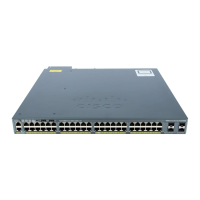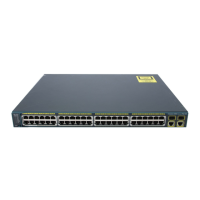SUMMARY STEPS
1.
configure terminal
2.
interface interface-id
3.
spanning-tree link-type point-to-point
4.
end
DETAILED STEPS
PurposeCommand or Action
Enters the global configuration mode.configure terminal
Example:
Switch# configure terminal
Step 1
Specifies an interface to configure, and enters interface
configuration mode. Valid interfaces include physical ports,
interface interface-id
Example:
Switch(config)# interface
GigabitEthernet1/0/1
Step 2
VLANs, and port-channel logical interfaces. The VLAN ID
range is 1 to 4094. The port-channel range is 1 to 48.
Specifies that the link type of a port is point-to-point.spanning-tree link-type point-to-point
Example:
Switch(config-if)# spanning-tree link-type
point-to-point
Step 3
Returns to privileged EXEC mode.end
Example:
Switch(config-if)# end
Step 4
Related Topics
Specifying the MST Region Configuration and Enabling MSTP, on page 59
Designating the Neighbor Type
A topology could contain both prestandard and IEEE 802.1s standard compliant devices. By default, ports
can automatically detect prestandard devices, but they can still receive both standard and prestandard BPDUs.
When there is a mismatch between a device and its neighbor, only the CIST runs on the interface.
You can choose to set a port to send only prestandard BPDUs. The prestandard flag appears in all the show
commands, even if the port is in STP compatibility mode.
Catalyst 2960-XR Switch Layer 2 Configuration Guide, Cisco IOS Release 15.0(2)EX1
OL-29424-01 73
Configuring Multiple Spanning-Tree Protocol
Designating the Neighbor Type

